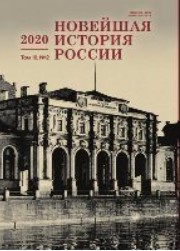Правовое и экономическое положение православного духовенства в 1930-е годы на юге Западной Сибири
The Legal And Economic Situation of Orthodox Clergy in the 1930s in the South of Western Siberia
Author(s): Peter Konstantinovich Dashkovskiy, Natalia Petrovna ZibertSubject(s): History of Church(es), Political history, Government/Political systems, Politics and law, Politics and religion, Interwar Period (1920 - 1939), Eastern Orthodoxy, Sociology of Religion
Published by: Издательство Исторического факультета СПбГУ
Keywords: confessional policy; orthodoxy; Russian Orthodox Church; clergy; West Siberia; Soviet Power;
Summary/Abstract: The Resolution “On Religious Associations” and other normative legal acts adopted by the Soviet government during the 1930s were aimed at the gradual destruction of religious life. this paper analyzes methods of work used by the Soviet state to prevent the spread of religious creeds in the West Siberian Territory, which negatively affected the position of the Orthodox clergy. In addition, the attitudes of various segments of the population to changes taking place in spiritual life are discussed. During this period, worshipers were subject to numerous compulsory fees and were involved in various labor duties. At the same time, the elimination of priests as a class was accompanied and complicated by numerous conflicts of priests and parish church councils, as well as with local authorities. A serious problem was the desecration of churches and the frequent theft of church property, which greatly complicated, and often made impossible, the holding of church services. The increase in retail prices in 1931 ravaged the parishioners of many churches and put worshipers in an extremely distressing situation. At the same time, the repression of clergy intensified, during which many were arrested and executed. The reduced number of clergymen threatened the functioning or even existence of many parishes in Western Siberia, and the intensification of persecution of clergy after 1937, along with the active closure of churches, led to the disappearance of the Barnaul diocese, with its territories becoming part of the Novosibirsk diocese by 1940.
Journal: Новейшая история России
- Issue Year: 10/2020
- Issue No: 31
- Page Range: 440-450
- Page Count: 11
- Language: Russian

